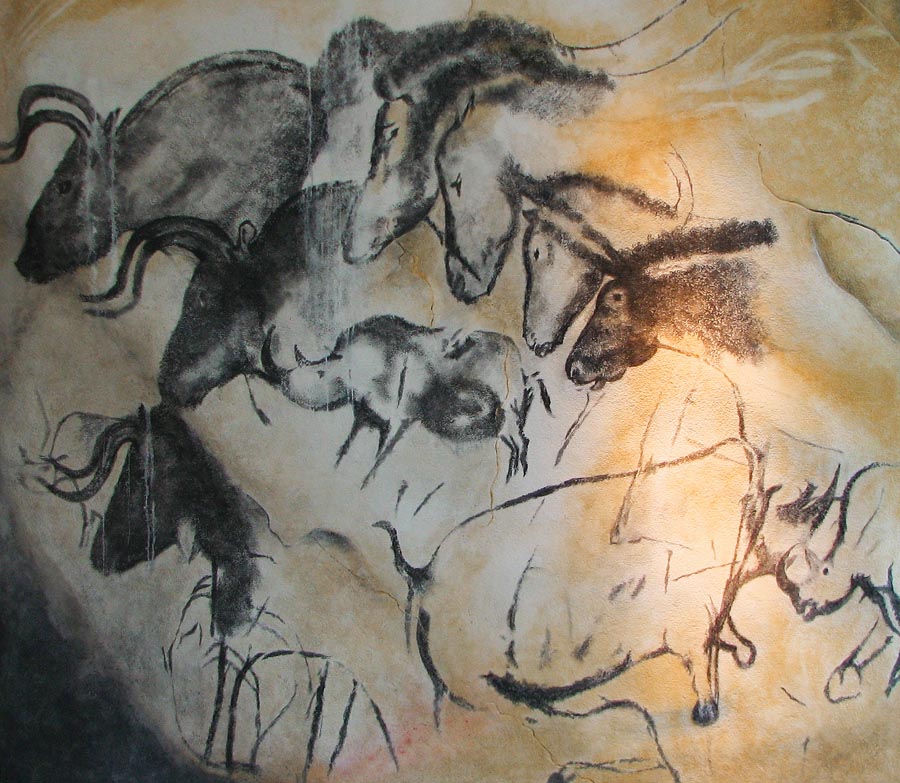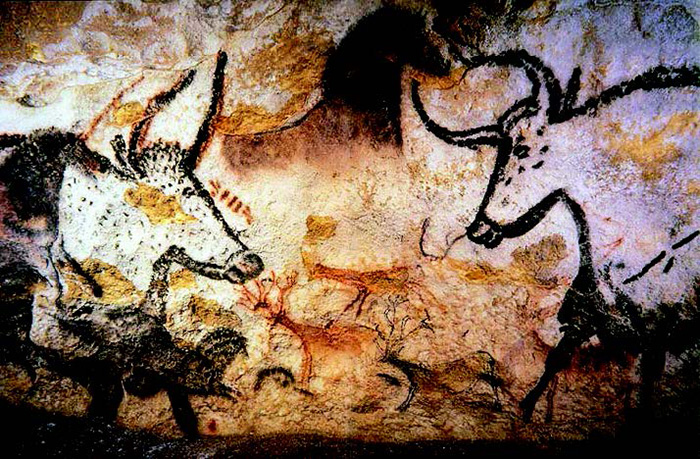Functional Characteristics of Paleolithic Artwork Suggest a Common
Without the aid of language these things. Dwellings and Shelters Early men chose locations that could be defended against predators and rivals and that were shielded from inclement weather.

Paleolithic Art An Introduction Article Khan Academy
At the end of the Paleolithic era humans began to produce works of art such as cave paintings rock art and jewelry and began to engage in religious behavior such as burial and rituals.

. - breadth as opposed to height. Paleolithic art concerned itself with either food hunting scenes animal carvings or fertility Venus figurines. Indepen- dent spontaneous development seems to have been the Preserved Paleolithic art falls into four loose categories rule as no single point of origin is apparent.
Its predominant theme was animals. Most of what remains today are broken pieces of a time long gone in the form of fragments of tools pottery and ruins of burial grounds and sacred sites. All of the following are common explanations provided except.
Paleolithic people are believed to have animistic religious beliefs. They are simple sketches of a cave wall with no significance at all. They are figures painted to ensure ritualized success in the hunt.
These small objects possibly served supernatural purposes as. The most famous example of Paleolithic sculptures however are the Venus figurines. It is considered to be an attempt by Stone Age peoples to gain some sort of control over.
Start studying AP Art History Semester Final. The most famous prehistorical paintings are in the caves of Altamira in Spain and Lascaux in France. More than 25000 years and across vast areas even though Cognitively advanced hominins evolved long.
The Paleolithic period also known as the Stone Age was characterized by prehistoric mans development of stone tools. Language was perhaps the most important innovation of the Paleolithic era. Non-figurative cave paintings consisting of hand stencils and simple geometric shapes are somewhat older at least 40000 years old and possibly as old as 64000 years.
In his hands stone became weapons or tools with a sharp edge a point or a percussion surface. The symmetry of artifacts evidence of attention to the detail of tool shape has led some investigators to conceive of. Decoration was also made on functional tools such as spear throwers perforated batons and lamps.
Some archaeologists have interpreted certain Middle Paleolithic artifacts as early examples of artistic expression. This fact suggests a common fundamental function somewhat different to other kinds of Paleolithic art. Older engravings are filled in with microscopic crystallizations.
However there is some evidence that the preference for the aesthetic emerged in the Middle Paleolithic from 100000 to 50000 years ago. Durable art occurs throughout much of Eurasia in material culture yet there is remarkable consistency in after 45000 years ago or with the onset of the Upper the dominant shapes and sizes of Paleolithic beads over Paleolithic UP Fig. The art of the Upper Paleolithic represents the oldest form of prehistoric art.
- the color red symmetry and dugong structure for the roofs and use of wood - gradiose structure and facade. This latter estimate is due. The cupule for instance - a mysterious type of Paleolithic cultural marking - amounts to no more than a hemispherical or cup-like scouring of the rock surface.
Art of the European Upper Paleolithic includes rock and cave painting jewelry 8 9 drawing carving engraving and sculpture in clay bone antler 10 stone 11 and ivory such as the Venus figurines and musical instruments such as flutes. They are tallies of animals taken in the hunt. It extends from the earliest known use of stone tools by hominins c.
Scientists can infer the early use of language from the fact that humans traversed large swaths of land established settlements created tools traded and instituted social hierarchies and cultures. The paleolithic man knew the birth of everything important to our. Dawn of Man 10000 BC.
- yellow roofs yellow color of emperor. They decorated walls of their cave dwellings with pictures of animals including deer bison and mammoths. Ornaments aka beads are the most common and ubiquitous art form of the Late Pleistocene.
Most of the paintings found in Altamira depict bison but there are also two wild boars some horses and. While the capacity for artistic expression could be considerably older than the record of preserved durable art would suggest beads signal a novel development in the efficiency and flexibility of visual communication technology. Although examples are common their purpose is still subject to debate.
They are painted as ceremonial art such as for puberty rituals. Up to 10 cash back This fact suggests a common fundamental function somewhat different to other kinds of Paleolithic art. The Paleolithic age lasted 34 million years ending from 6000 BC.
Small figurines carved from stone bone ivory or clay depicting naked women often with exaggerated body parts and genitalia. Figurative art is present in Europe and Southeast Asia beginning between about 40000 to 35000 years ago. Lack of artifacts from the prehistoric period can be overcome in the study of art history by virtue of.
Fresh lines are clean white and neat. - surrounded by walls - ten statutes on hall of supreme harmony indicate protection. They are pierced and covered with red ochre suggesting that they might have hung off a string.
Comparisons with other prehistoric works. Ornaments mainly beads decorated tools small carved figurines and rock art cave paintings and incised or bas-. They were small objects carved out of stone antler or bone.
Archaeological evidence indicates that the bison forms in the images shown that do not share a common orientation represent. Paleolithic man manufactured four types of. Functional characteristics of Paleolithic artwork suggest a common.
The earliest forms of prehistoric art are extremely primitive. Learn vocabulary terms and more with flashcards games and other study tools. While not much remains of our earliest days there is some evidence that our oldest ancestors had rudimentary forms of art.
- high density of buildings and only the important ones are elevated. They also made small sculptures. Examination of the setting for signs of disturbance.
The Paleolithic or Palaeolithic or Palæolithic ˌ p eɪ l- ˌ p æ l i oʊ ˈ l ɪ θ ɪ k also called the Old Stone Age from Greek palaios - old lithos - stone is a period in prehistory distinguished by the original development of stone tools that covers 99 of the period of human technological prehistory. Language culture and art. Comparison of objects from differing cultures.
Generalizations about the function of prehistoric artwork are based primarily on.
Paleolithic Art Culture History Evolution

Cave Paintings Of The Paleolithic Age Video Lesson Transcript Study Com

No comments for "Functional Characteristics of Paleolithic Artwork Suggest a Common"
Post a Comment